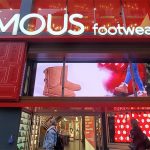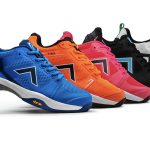Zumiez Inc. reported a slowdown in sales in the fiscal second quarter accelerated in August when its same store sales declined 7.2 percent as U.S. teens and 20-somethings took a pass on many of the retailer’s summer and back-to-school fare. Profits also tumbled as the retailer had to mark down out-of-favor seasonal items faster than expected.
The report confirmed trends outlined by rival Pacific Sunwear of California Inc. in its disappointing fiscal second quarter earnings report two days earlier and came three days after Quiksilver Inc. filed a Chapter 11 bankruptcy petition in a bid to restore its U.S. business to profitability.
Negative trends cited by ZUMZ Thursday included: lackluster consumer traffic driven by the absence of clear and favorable fashion trends; weakness in ZUMZ spring and summer seasonal product; the impact of foreign exchange, particularly in our border and more tourism-oriented locations; and the shift of the Labor Day holiday back one week from the prior year.
Comps head south in fiscal second quarter
ZUMZ reported revenue reached $179.8 million during the period, up 1.8 percent compared with the 13 weeks ended Aug. 2, 2014. North America sales decreased 0.5% to $166.3 million, while European sales grew 41.7 percent to $13.5 million, including negative impact of foreign currency translation of approximately $4.4 million.
Same-store sales, including e-commerce, declined 4.5 percent due to a decline in transaction volume, partially offset by an increase in dollars per transaction. The company operated 640 stores as of Aug. 1, including 578 in the United States, 40 in Canada, and 22 in Europe, where it owns pan-European retailer Blue Tomato.
In terms of category performance, men's, accessories, footwear and juniors posted negative comps while hard goods had a positive comp. Many seasonal items, however, fared poorly.
As a result, the combined sales of Zumiez’s Top 10 and Top 20 selling brands declined in the first half of fiscal 2015 as a percentage of total sales compared with a year ago. The retailer ended the period with inventory valued at $122.1, up just 1.0 percent from a year earlier.
Gross margins slipped 240 basis points to 32.1 percent, while SG&A as a percentage of net sales rose 120 basis points to 29.2 percent. Net income in the second quarter of fiscal 2015 decreased 56.9 percent to $3.2 million, or 11 cents per diluted share.
Trend worsens in August
ZUMZ ended the first half of the fiscal year with sales up 5.2 percent and comparable store sales down 0.9 percent, but the declines worsened during the four-week period ended Aug. 29, when net sales decreased 7.2 percent to $87.3 million and comparable sales decreased 10.7 percent compared to an increase of 2.0 percent a earlier. The decline was driven by a decrease in comparable transactions, partially offset by an increase in dollars per transaction, driven by an increase in average unit retail and an increase in units per transaction.
During the four weeks ended August 29, 2015 men's, footwear, accessories, juniors and hard goods posted negative comps.
“With the evolving nature of the empowered consumer through the use of technology, the business is subject more than ever to trend cycles that develop faster and end faster,” noted Zumiez Inc. CEO Rick Brooks. “And all of these cycles are moving faster in response to the need of today's technology-empowered consumer.”
‘We’re going to tear the business apart’
Brooks said ZUMZ is working hard to quickly address “the lack of trend right fashion in our U.S. channels,” but said the company has already discarded a forecast for denim sales prepared early in the fiscal second quarter.
“Now that back-to-school is basically almost fully complete, we're going to just tear the business apart,” he said. “We're going to do deep analysis on every aspect of the business, across brands, across geography. I expect that this analysis is going to allow us to develop opportunities to impact our assortments on an individual store level, micro assortment basis.”
ZUMZ still plans to launch new brands this fall, but is also looking at pushing trending items into more stores and pulling forward unique seasonal products, including snow board apparel. The retailer is also evaluating whether to shift more open-to-buy dollars toward private label products such as denim, should a trend fail to emerge in time for the holidays.
The company’s newly issued guidance anticipates comparable sales will decrease in the 7-to-9 percent range in the fiscal third quarter ending October 31. That is expected to result in net sales to $202-to-$206 million and net income per diluted share of approximately 27-to-31 cents. The company opened 24 stores in North America in the fiscal second quarter and still plans to open approximately 57 in fiscal 2015, including up to seven in Canada and six in Europe.















